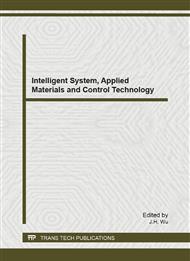[1]
L Yi, Y Peng and Q Sun. Applied Optional Design Research of Composites Based on ANSYS. Mechanical Science and Technology (Chinese). Vol. 24 (2005), pp.1214-1216.
Google Scholar
[2]
B Niu, N Olhoff, E Lund and et al. Discrete material optimization of vibrating laminated composite plates for minimum sound radiation. International Journal of Solids and Structures, Vol. 47 (2010), pp.2097-2114.
DOI: 10.1016/j.ijsolstr.2010.04.008
Google Scholar
[3]
T Yamamoto, S Maruyama, S Nishiwaki and et al. Thickness optimization of a multilayered structure on the coupling surface between a structure and an acoustic cavity. Journal of Sound and Vibration. Vol. 318 (2008), pp.109-130.
DOI: 10.1016/j.jsv.2008.04.004
Google Scholar
[4]
H Denli. and J Q Sun. Structural-acoustic optimization of sandwich cylindrical shells for minimum interior sound transmission. Journal of Sound and Vibration. Vol. 316 (2008), pp.32-49.
DOI: 10.1016/j.jsv.2008.02.027
Google Scholar
[5]
Z S Xu, Q B Huang and Z G Zhao. Topology optimization of composite material plate with respect to sound radiation. Engineering Analysis with Boundary Elements. Vol. 35 (2011), pp.61-67.
DOI: 10.1016/j.enganabound.2010.05.013
Google Scholar
[6]
A Shokuhfar, S M R Khalili, F A Ghasemi, and et al. Analysis and optimization of smart hybrid composite plates subjected to low-velocity impact using the response surface methodology (RSM). Thin-Walled Structures. Vol. 46 (2008), pp.1204-1212.
DOI: 10.1016/j.tws.2008.02.007
Google Scholar
[7]
X H Liang, Z Q Lin and P Zhu. Acoustic analysis of damping structure with response surface method. Applied Acoustics. Vol. 68 (2007), pp.1036-1053.
DOI: 10.1016/j.apacoust.2006.05.021
Google Scholar
[8]
Y M Xu, S L Shuo and X M RONG. Composite Structural Optimization by Genetic Algorithm and Neural Network Response Surface Modeling. Chinese Journal of Aeronatics. Vol. 18 (2005), pp.310-316.
DOI: 10.1016/s1000-9361(11)60250-1
Google Scholar
[9]
Z W Li and X H Liang. Vibro-acoustic analysis and optimization of damping structure with Response Surface Method. Materials and Design. Vol. 28 (2007), p.1999-(2007).
DOI: 10.1016/j.matdes.2006.07.006
Google Scholar
[10]
K L Low, S H Tan, S H S Zein, D S Mcphail and et al. Optimization of the mechanical properties of calcium phosphate/multi-walled carbon nanotubes/bovine serum albumin composites using response surface methodology. Materials and Design, Vol. 32 (2011).
DOI: 10.1016/j.matdes.2011.02.022
Google Scholar


